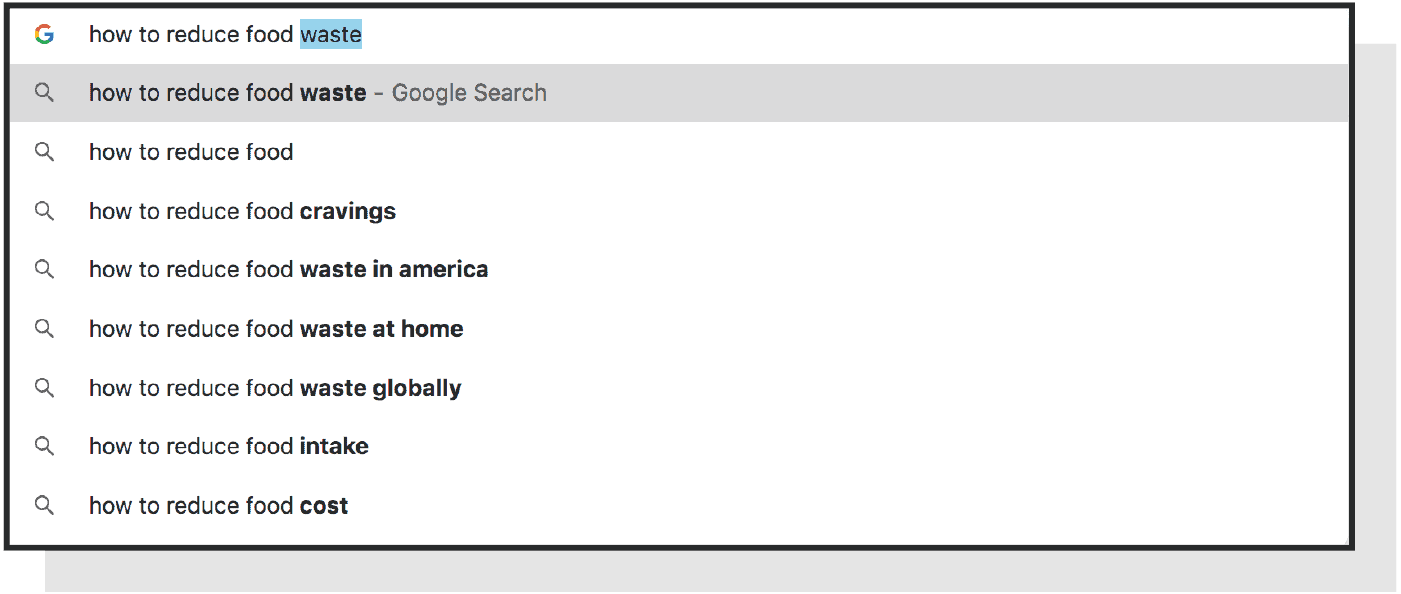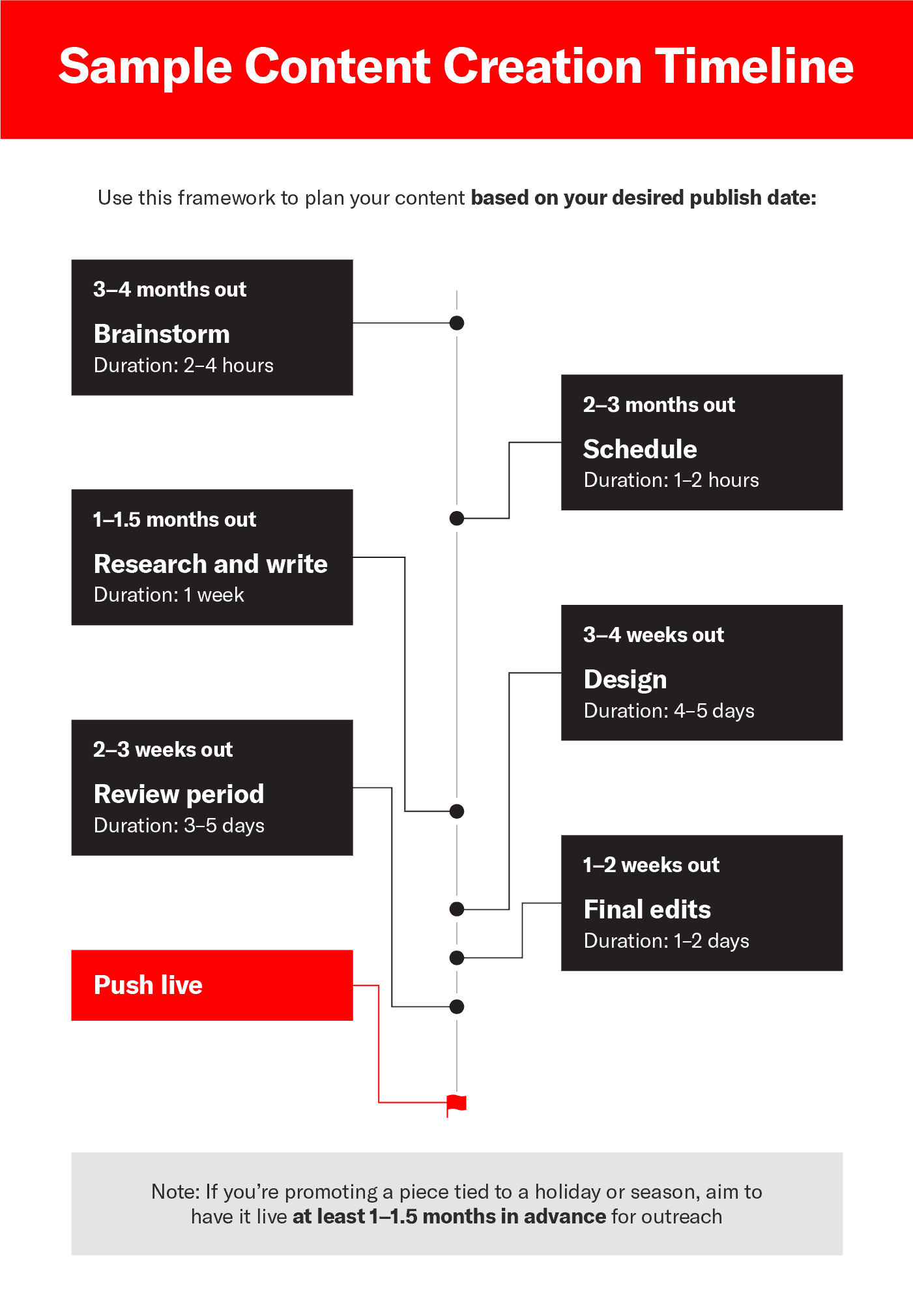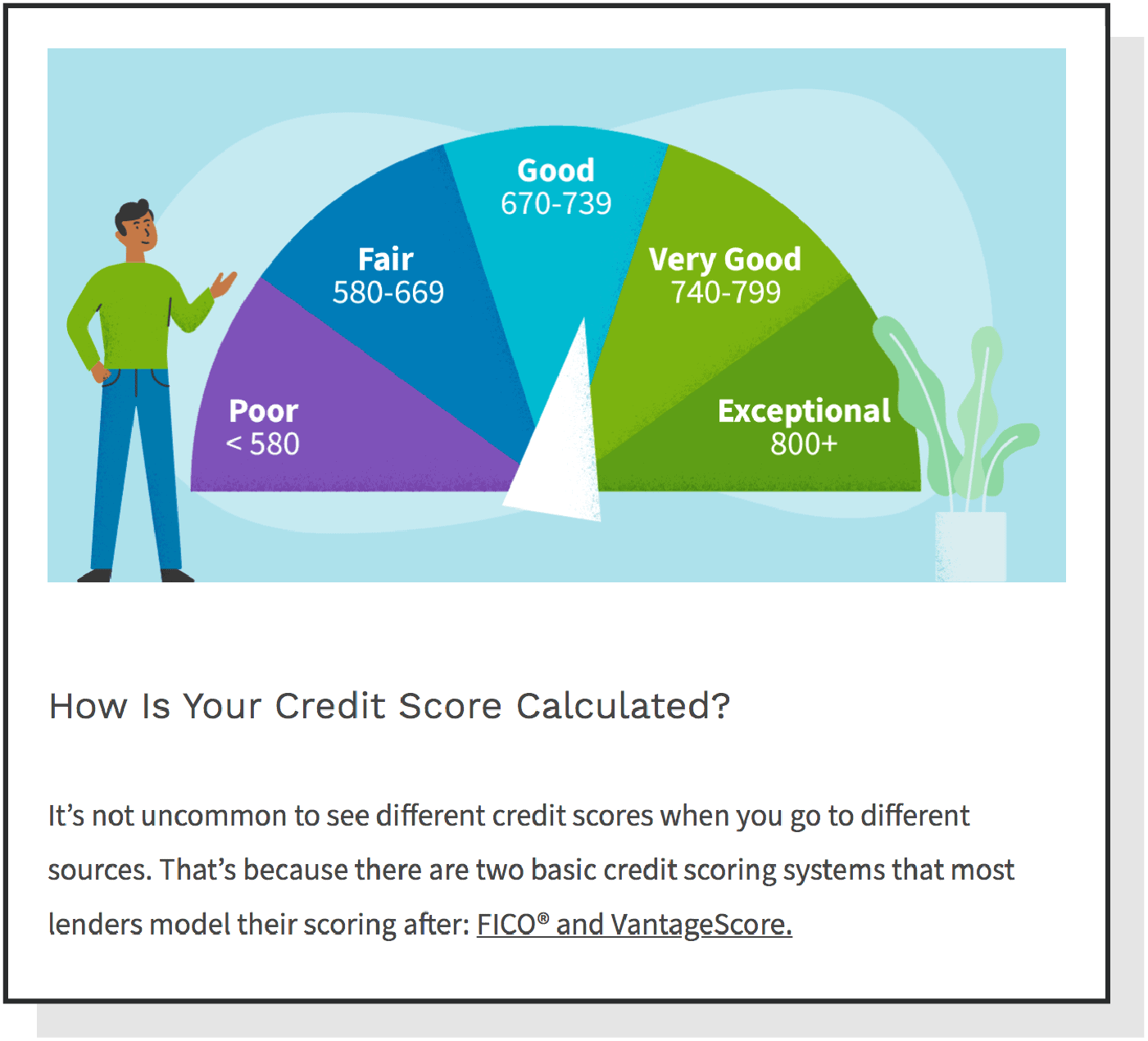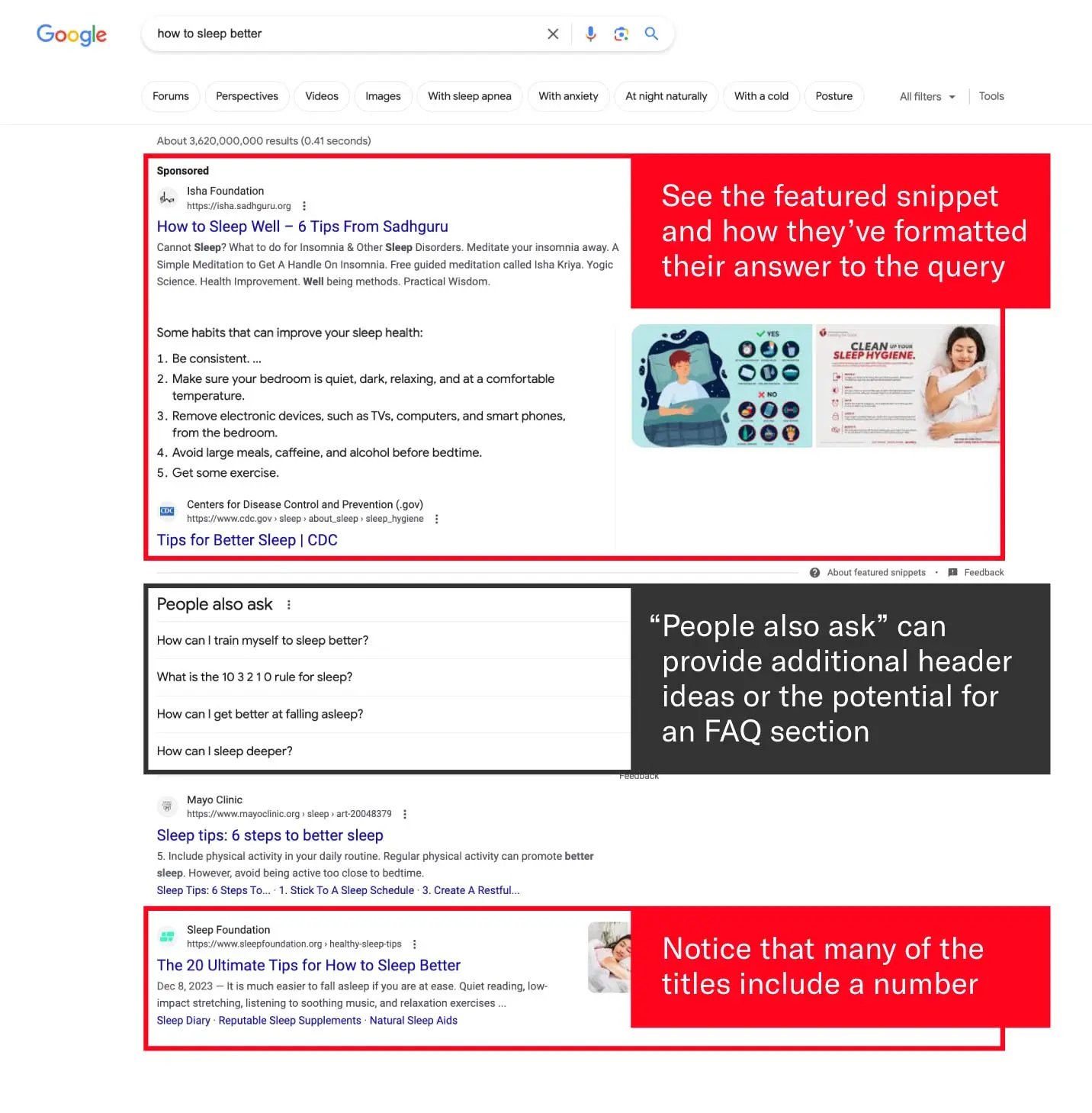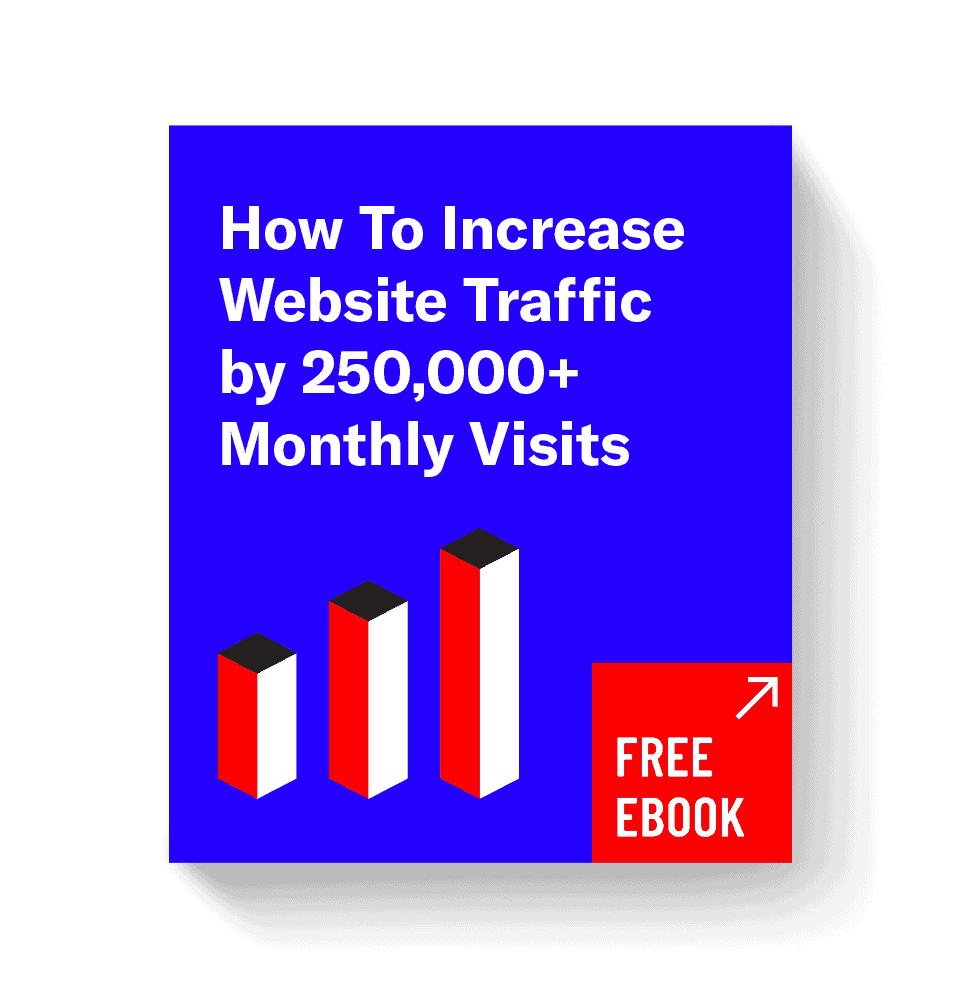Content marketing is a lot like the real estate industry — landing a spot on Page One is like scoring a beachfront property.
Your content’s location is key. If you’re creating great content but don’t have SERP rankings, it will be hard to see ROI. On the flip side, if you have content ranking that isn’t fully satisfying search intent, readers will likely bounce and find a better piece — leaving you without conversions or payoff.
The benefits of content marketing may be clear, but you need to have a solid foundation in strategy, creation, optimization, and analytics if you want your content to reach its full potential. We gathered 11 essential content marketing best practices to create a winning strategy that drives visibility and organic results.
1. Create a Clear Strategy
To create a strategy that satisfies content marketing best practices, you must understand your brand, target audience, and your offerings. Your content should always have:
- Clear ties back to the services or products you offer
- Consistent branding (in the copy and design)
- Relevance to your target audience
Look at what you offer and who your customers are to create a handful of content categories that will resonate. If you don’t know how to start your research, try searching different terms relating to product offerings or general topics on AnswerThePublic. It will generate a variety of related terms and phrases. See a search for “landscaping” below.
From there, you can start building out your ideas through keyword research, which we’ll cover below.
From there you can start building out your ideas through keyword research, which we’ll cover below.
2. Invest Time in Keyword Research
Find different keywords that fall under the overarching categories, such as buyer personas, that you’ve decided on. Keep these keywords organized in your tracking doc, or use the rank trackers that come with your content marketing tools.
You can conduct keyword research with tools like Ahrefs and Moz or even free tools like Keyword Surfer and AnswerThePublic. When using these tools for organic keyword research, look out for these main keyword elements (using Ahrefs for the following examples):
- Search volume (SV): Average monthly searches for a term
- Click volume (CV): Average monthly clicks for a term
- Keyword difficulty (KD): How hard it is to rank for (the lower the number, the easier it will be to rank for)
Use existing information to your advantage. Check out customer reviews, feedback, and comments to see if any common questions or topics come up. Use Google’s auto-fill to help you find queries.
In the example below, we took the mission of Imperfect Foods (“Eliminate food waste and build a better food system for everyone”) and used it to find relevant blog topics. Please note that SERP results get personalized for each user, so try using keyword research tools for a more accurate view since they show the average results across users.
Different keywords lend themselves to different content types (e.g., some fit promotion while others are better under the category of SEO). Ideally, you’ll be able to create content that is both optimized and shareable. Thay way, you can promote it while it ranks and gains organic links and traffic.
While examining keywords, you should also consider how the keyword best fits the content.
- “How to reduce food waste” (SV 500, CV 541): This should be a priority to rank for and needs a shareable element since the keyword difficulty is high at 68. Building organic backlinks will be key in ranking for this.
- “How to reduce food cost” (SV 40, CV N/A): Though the search volume is small, it could bring in qualified leads of people looking for more affordable food options. It could also lend itself to an interactive food budget calculator to increase shareability and target additional keywords.
- “How to reduce food waste in America” (SV 20, CV N/A): The phrase doesn’t have a notable search or click volume but could inspire a news-worthy, shareable city study examining the most food-efficient and wasteful cities or something of that nature.
Find your competitors (if you haven’t already), both in content and in your offerings (they may not always be the same). Check out your competitors’ rankings and keywords to inspire and inform your own list.
Below, we look at Misfit Market’s blog. We found this competitor simply by searching “Imperfect foods versus…” in Google and letting autofill do the work. You may not always see homerun topics, but it helps you see which types of content resonate in your industry.
Try the “Top pages” view and the “Best buy links” or “Best buy links’ growth” to find different successful pieces.
From there, you can map out your keywords in a Keyword Opposition to Benefit Analysis. A KOB analyzes keywords for their traffic value and opportunity against keyword difficulty. You’ll be able to prioritize the content that will rank the fastest.
3. Establish Your Publishing Pace
To establish a readership or a solid following, you first need to establish a publishing pace. You can’t expect to establish a reader base if you publish sporadically. Followers or subscribers want to have an idea of what they can expect.
Not only does this help readership, but it also helps with scheduling your content calendar. We typically brainstorm content 3-4 months in advance so content has time to rank. This is especially important for seasonal content but not so much for evergreen content.
Shoot for quality over quantity. It’s much better to have two solid posts per month versus several thin pieces of content that don’t provide as much value. Thin content doesn’t add value to your site — it’s not driving traffic, links, conversions, or any other value.
We like to think of blog content like a library of information versus a news publication. If you start pumping out thin content, you’ll likely see lower returns and eventually have to fix or redirect those pieces, so putting the work in up front is better.
4. Consider User Intent
Your audience should always be at the top of your mind through the entire creation process so you can create content that actually connects. Think about the topic you’re covering and where a particular topic fits in the buyer’s journey.
For example, if you specialize in credit repair, the keyword “what is a credit score” would be a great beginner topic. You may not come across readers needing immediate credit repair, but down the line, some readers may need assistance. Someone asking this basic question isn’t ready for advanced credit information but the fundamentals, like how the score is calculated.
Notice how this design highlights important information and adds value to the piece. Design is an integral part of the user experience and should be considered when thinking about the reader’s intent. Ask yourself:
- What are users looking for when they search the target keyword or phrase that you’re covering?
- How can you best answer their question or fulfill the intent?
- What can you add to your piece of content that provides more value than what currently exists?
If you’re not going to fulfill search intent and add value while doing so, then why would someone choose your content over a competitor’s piece? Content creators should always strive to create something better than what’s already out there. Once you know that you can nail the user intent, you want to make sure that it’s optimized to rank.
5. Optimize for SEO, but Don’t Overdo It
Write for people, not robots. In other words, you don’t want to produce a piece so rigid and SEO-optimized that it feels like a robot wrote it. You can satisfy SEO while also making the piece enjoyable and engaging.
We usually create an outline that helps break down the SEO elements that we’d like to include (like long-tail keywords, potential internal links, and potential headers). Outlines are not set in stone — you should always feel free to modify or move elements to make a piece flow better.
The SERP provides a lot of context clues on user intent and the necessary SEO elements as well. When examining the SERP, you should look out for:
- The nature of a query (are the results product-based or education-based?)
- Commonalities in the ranking titles and URL slugs
- Recurring sub-topics and headers
- The average word count needed to satisfy the query
- Questions that appear in the “People also ask” box
- Additional ranking elements like a video carousel
If you were creating content for an HR company, consider looking into topics around disgruntled employees. In addition to examining the query in a keyword research platform, you should look at the SERP for clues about the content must-haves.
Beware of over-optimization (unnatural use of SEO elements). Over-optimization is most commonly caused by keyword stuffing, the overuse of target keywords. You can avoid this by writing copy that naturally weaves in keywords, using synonyms and other long-tail keywords along with the target keyword, and prioritizing the user rather than prioritizing SEO.
Design and optimization of your blog also play a big role in ranking. An incorrect blog setup can hinder your ranking power and visibility even if your content is spot-on. Consult SEO experts to ensure that you’re on the right track from the beginning. Large updates can be costly, time-consuming, and can hinder performance.
6. Produce Different Types of Content
Content marketing isn’t just limited to cookie-cutter SEO blog posts. You can produce various types of content marketing to grow your online presence and improve your ROI.
There’s an extensive list of types of content you can create, including:
- Blogs
- Infographics
- eBooks
- Case studies
- Surveys
- Guides
- Videos
- Podcasts
- Interactives
Remember what the SERP results show, how the target keywords relate to your product, and what best connects with your audience.
For example, if you are an auto insurance company with an extensive content library, consider creating a shareable eBook that compiles helpful content for new drivers. Combine existing posts on “How to Find the Right Car Insurance,” “Different Types of Coverages,” and “How to Insure a New Driver.”
7. Use AI to Your Advantage
If you haven’t heard by now, AI in content marketing is taking the content marketing world by storm. However, it’s not necessarily a bad thing. Many content marketing agencies and companies are implementing AI into their workflows, from proofreading copy to keyword brainstorming.
Start playing out with AI marketing tools such as:
You can use AI to reduce time spent building content frameworks and answering questions. However, your content should still be written by a human and sound human. Create content reflecting your brand’s tone and voice and resonates with your audience.
8. Update and Refresh Older Content
Reoptimizing and refreshing your existing content can be just as or more effective than creating net new content. If you have a large content hub filled with older content that isn’t performing well anymore, consider implementing content updates into your content strategy.
How often you need to update content depends on the type of content and SERP results. For example, if you have a post on “automation testing tools,” you’ll notice on the SERP that these posts are yearly updated for freshness.
However, a post on “What is workflow automation?” requires less frequent updates as the definition doesn’t change much over time.
For content updates, remember that definitional and “how-to” posts need less frequent updates. Consider refreshing “best-of” and data-heavy posts more frequently based on the SERP.
9. Set Baselines and Track Results
While thinking through your content strategy best practices and building out your plan, you should also solidify your content goals. What does a successful content strategy look like to you? Consider setting goals around engagement, traffic, backlinks, and conversions.
Of course, you should tailor your goals and tracking methods to your site, but you can look to similar sites to provide insight. To get an idea of expected results, find a site in the same industry with a similar domain authority and a content strategy you admire (or one with high blog traffic).
Search the site on Ahrefs, click on “Organic search,” and see the growth chart under “Organic traffic” to see their traffic trend and if there is any content or campaign that helped cause to an uptick in traffic.
Add the keywords you’re hoping to rank for to the “Rank Tracker” in Ahrefs. It will keep track of overall movements, which pieces drive the most traffic, and other helpful metrics. Moz also has a great rank tracker equivalent. Check your rankings at least twice a month and look for positive and negative movements.
Look for commonalities between your most successful pieces and figure out what’s not working in underperforming pieces. Consider keeping tabs on your close competitors to compare performance and growth. We recommend using the “Domain Comparison” function in Ahrefs and the “Content gap” to compare your site with your competitors.
Google Analytics is a massively helpful tool for tracking performance and troubleshooting issues. There’s a free Google Analytics Academy that will walk you through how to utilize the tool if needed. Once on your account, you should insert annotations to add context and mark changes like campaign roll-out dates and site-wide updates.
10. Measure Your Content for ROI
Measuring your content for ROI allows you to gauge whether or not your content is generating revenue for your business. At Siege Media, we use SEO as the primary channel, which tends to have the highest ROI in content.
You can use calculators to calculate your ROI based on your business model and performance metrics. You can also calculate your ROI using the following formula:
You can also set up monthly reporting using software like Google Analytics or Ahrefs to track your content’s traffic, conversions, and keyword performance. Consistent reporting will provide a better understanding of the content your audience interacts with and where you should focus your efforts to increase revenue.
11. Be Aware of Algorithm Updates
Stay up to date on Google algorithm updates and changes. We recommend the following blogs for posts on Google updates, SEO, and content trends, and news:
Google and other search engines are quickly updating their ranking results and factors, which can impact how your content performs on the SERP. Check out the Google Search Status Dashboard for summaries on core, spam, and helpful content updates.
One constant factor is emphasizing E-E-A-T (Experience, Expertise, Authoritativeness, and Trust). Therefore, ensure that your content continues to align with the Search Quality Evaluator Guidelines.
Be Ready To Adapt
Your content best practices will evolve along with the growth of your company or blog. Outside factors like algorithm updates may also influence the direction of your strategy and ability to hit goals. To accelerate your organic rankings, try link building strategies alongside your typical creation process and content marketing best practices.
Strapped for time? Hiring Siege is like adding 10+ outreach and content roles to your team. We can help you create content that will build valuable, organic backlinks and take the stress off of your internal team so you can focus on making your business the best it can be.



